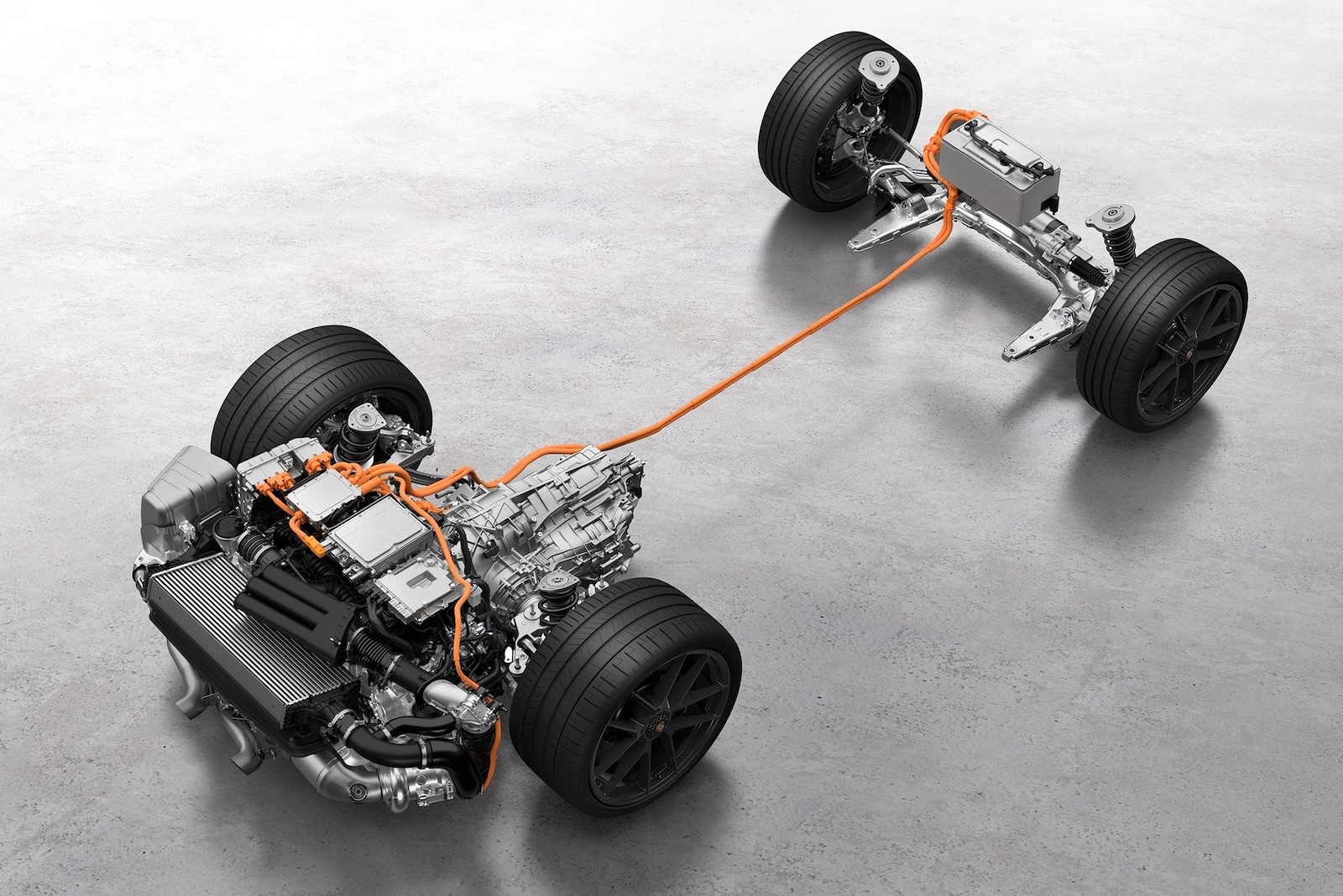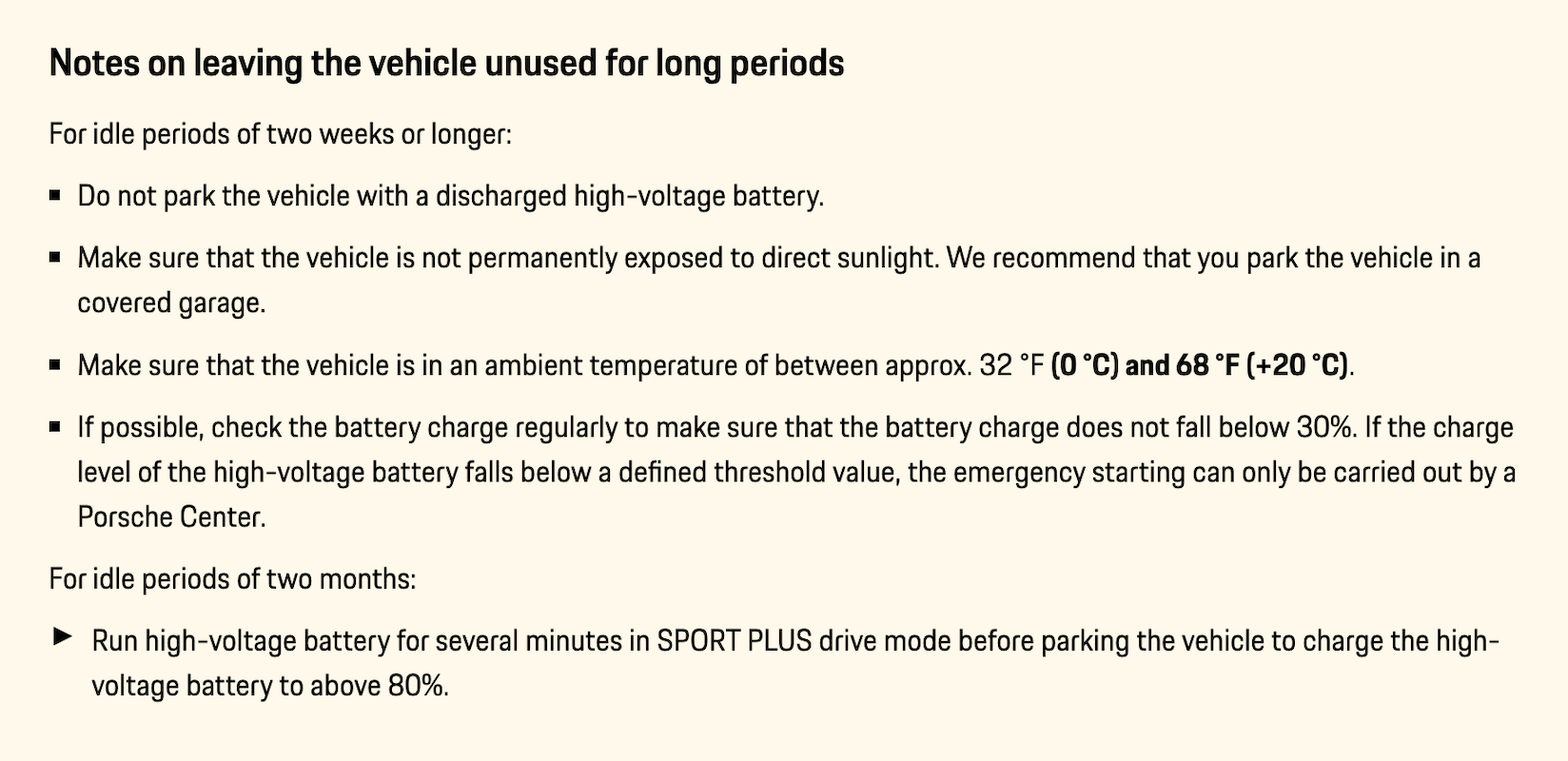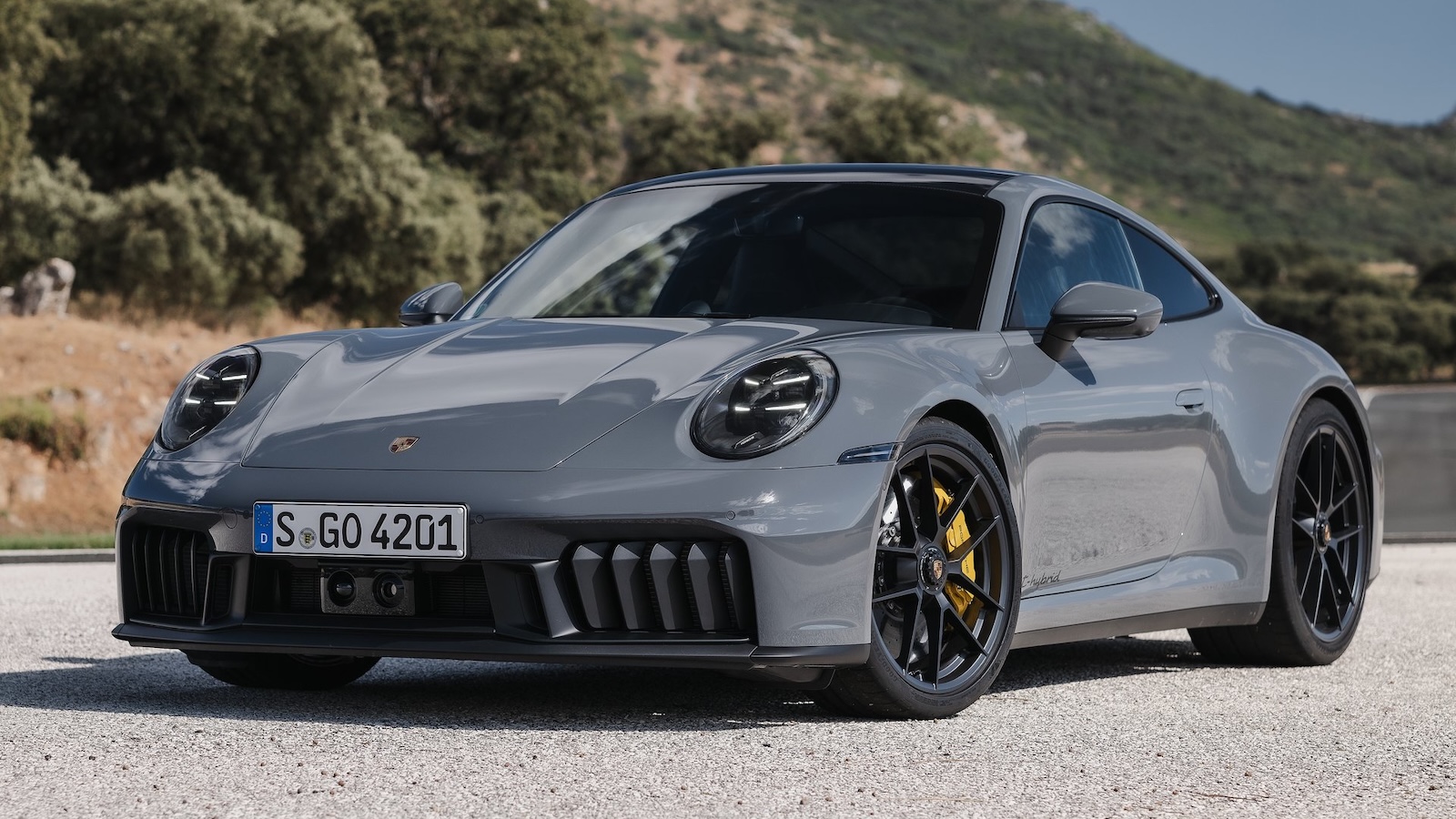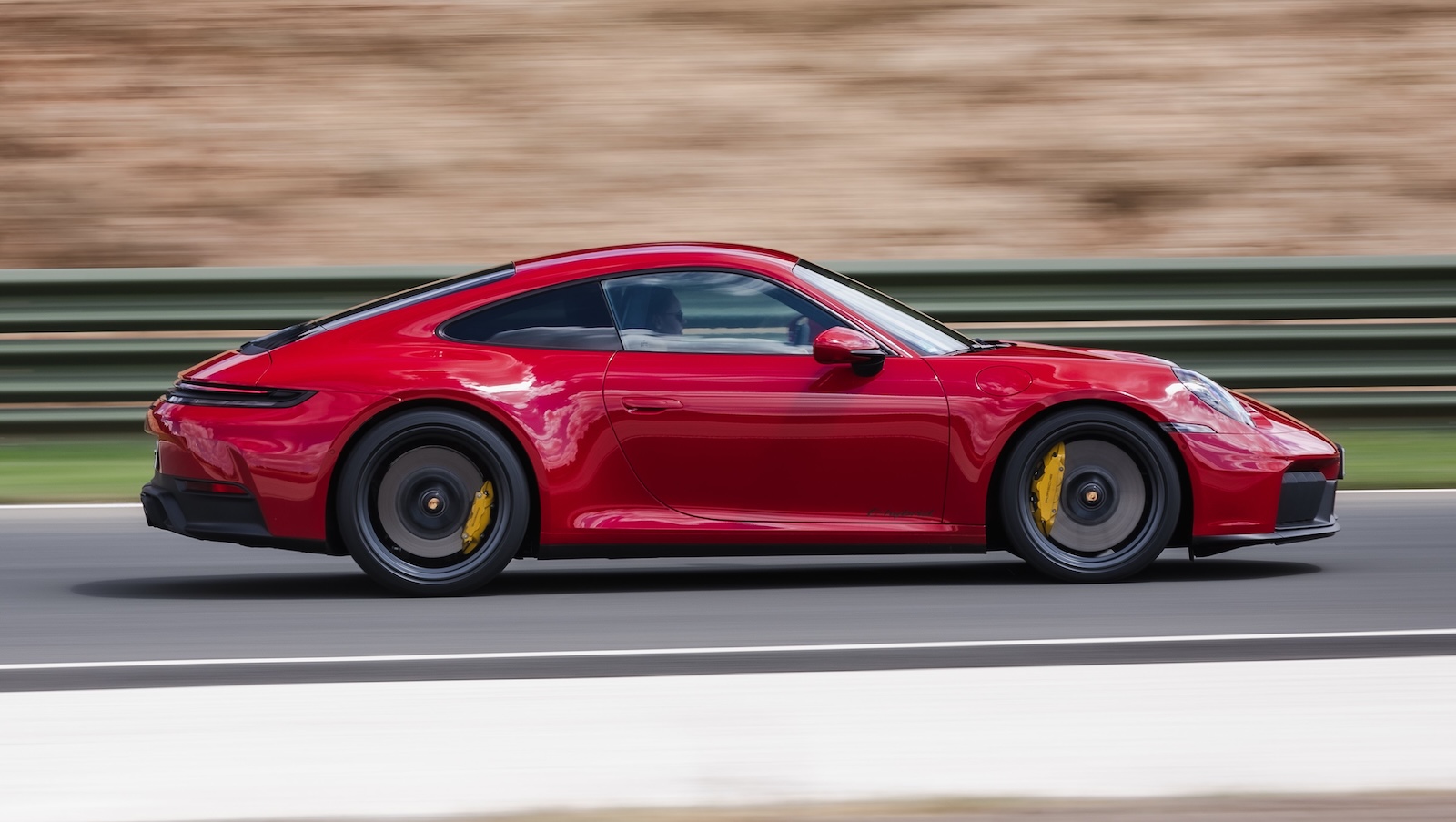The new Porsche 911 Carrera GTS T-Hybrid is pretty amazing when you think about it. It works unlike pretty much every other hybrid system on the market, using electric assistance to boost output rather than to embrace the quiet glide of an electric motor around town. Unfortunately, sports cars like a 911 are often occasional drivers, and this powertrain doesn’t seem to be set up optimally for what that use case might entail.
First, some background on what makes the new GTS trim special. A flywheel motor augments a 3.6-liter flat-six with an electrified turbocharger to crank out a combined 532 horsepower and 449 lb.-ft. of torque, resulting in a real-world zero-to-60 mph time in the mid-twos, modern emissions compliance, and a relatively modest 60-pound weight penalty. Better yet, the 1.9 kWh high-voltage battery pack sits in the normal battery tray, meaning you aren’t giving up any trunk space.
However, if you want to tuck your new 911 Carrera GTS T-Hybrid or 911 Targa GTS T-Hybrid away for an extended period of time, there are some precautions you should be aware of. I went poking through the owner’s manual and found these precautions listed, which led Matt to say that the car is “basically a Dracula.” You’ll see what he means.
Notes on leaving the vehicle unused for long periods
For idle periods of two weeks or longer:
- Do not park the vehicle with a discharged high-voltage battery.
- Make sure that the vehicle is not permanently exposed to direct sunlight. We recommend that you park the vehicle in a covered garage.
- Make sure that the vehicle is in an ambient temperature of between approx. 32 °F (0 °C) and 68 °F (+20 °C).
- If possible, check the battery charge regularly to make sure that the battery charge does not fall below 30%. If the charge level of the high-voltage battery falls below a defined threshold value, the emergency starting can only be carried out by a Porsche Center.
For idle periods of two months:
-
Run high-voltage battery for several minutes in SPORT PLUS drive mode before parking the vehicle to charge the high-voltage battery to above 80%.
There’s a lot to unpack here, so let’s start from the top. Obviously, letting anything with a battery sit discharged for a while isn’t great for battery health, whether we’re talking about an iPod Shuffle or a car. Ever try to power up one of your old mobile phones for nostalgia’s sake, only to find it doesn’t hold a charge?

However, the next few clauses seem absurd. If you’re parking your 911 Carrera GTS T-Hybrid for two weeks or more, you can’t leave it in direct sunlight and can’t let it get too hot or too cold. Probably not the best machine to leave at the airport while away on a two-week holiday, then. However, even if you take sunlight out of the equation, many residential garages get above 68 degrees Fahrenheit in summer and, if you live far enough north, below 32 degrees Fahrenheit for weeks in the winter. This seems like a tricky limitation for those who store their cars out of the snow in winter, but it’s fixable with climate-controlled storage. The next item? Not so much.

Basically, whether you’re leaving the new 911 Carrera GTS T-Hybrid parked for two weeks or two months, the state-of-charge on the hybrid battery must stay above 30 percent as per Porsche’s instructions. So what about just throwing the 911 Carrera GTS T-Hybrid on a trickle charger? Well, that will keep the 12-volt battery topped off, but it’s not going to feed the high-voltage pack. Even if it could, Porsche’s own trickle charger, along with many on the market, has a maximum DC output of 14.7 volts and five amps. That’s 73.5 watts, not nearly enough to provide meaningful juice to a high-voltage hybrid battery pack.

While it is totally possible to idle the engine in Sport Plus mode to replenish charge, idling without driving requires a bit of care. Not only should the space you start the car in be well-ventilated to avoid carbon monoxide poisoning, you also need to ensure the oil reaches a hot enough operating temperature to get rid of condensation. Ever lift the oil cap on a car that’s done a lot of short trips to find milky residue under the cap? That’s an effect of condensation in the oil.

Now, if you ignore these precautions and let the state-of-charge in the hybrid battery pack get critically low, there’s a chance you won’t be able to start your 911 Carrera GTS T-Hybrid. That’s because it uses the high-voltage electric motor inside the bellhousing to start the engine instead of a traditional 12-volt starter motor. This means that instead of a traditional jump-start, you’ll be calling a flatbed to take your car to the dealer for an emergency start. I suspect this is partly why models like the McLaren Artura and Ferrari 296 GTB are plug-in hybrids. They’re occasional-use cars, and if electrification is the solution to meeting both performance targets and emissions targets, why not let these cars be topped off from the mains?

There is one solution to managing the high-voltage battery charge in the 992.2 Porsche 911 Carrera GTS T-Hybrid, however, and that’s by making it your daily driver, and throwing the keys to trusted close friends and family when you go on vacation. Sure, if you live in a place that salts the roads, winter will treat the underbody with indiscriminate hostility, you will get rock chips, and there’s a chance you won’t end your ownership period with a clean Carfax, but do you know what they call the person with the most mileage on their sports car? A hero.
Top graphic image: Porsche
Support our mission of championing car culture by becoming an Official Autopian Member.









Lazy implementation of a high voltage system. This will do nothing but leave a sour taste in petroholic mouths.
Either give it a J1772 plug or provide the vehicle a monitoring/storage mode with a bi-directional dc/dc converter to trickle charge the hv batt when charging the LV batt.
I had a BMW 3-series diesel with a similar setup. The manual stated that it had a setup to recharge the HV battery from the 12V battery during trickle charging.
But then the 3-series diesel is a really heavy car at almost two tons. And this only weighs (check 911 hybrid weight)… You know what, never mind.
What if, say, you live in northern climes where its typical to have your summer toys in off-site storage for 4 or 5 months. Works fine for all my classics kept on a trickle charger but basically eliminates the new model.
HVAC system for the garage and a whole house backup generator?
Storage already has that. I store a 911s of the 1971, 1976, 1983, 1985 and 2006 vintages, no problem. Oilchanges, trickle chargers and febreeze to keep the mice out and they are good for months.
It’s a very tiny battery and I understand why there’s no built-in charger, but I can’t believe Porsche is passing up this opportunity to sell you a $1,000 battery maintainer specifically for this H.V. battery. Knowing their clientele you would think they’d leave a pigtail under the frunk somewhere to hook up to an optional Porsche trickle charger to keep that battery around 80%.
The only weird thing about all this is the temperature requirement. 68°F is rather unrealistic for a garage anywhere south of Duluth, Minnesota. Most people I know who air condition their garages (and it ain’t many) keep them in the mid 70°s.
“ There is one solution to managing the high-voltage battery charge in the 992.2 Porsche 911 Carrera GTS T-Hybrid, however, and that’s by making it your daily driver”
When the best maintenance plan for a car is to simply drive it and people still don’t, something is wrong
Porsche 911 Carrera hybrid vampire? How about charge it up and put a trickle charger on it in your attached garage? You got Porch money you got an attached garage.